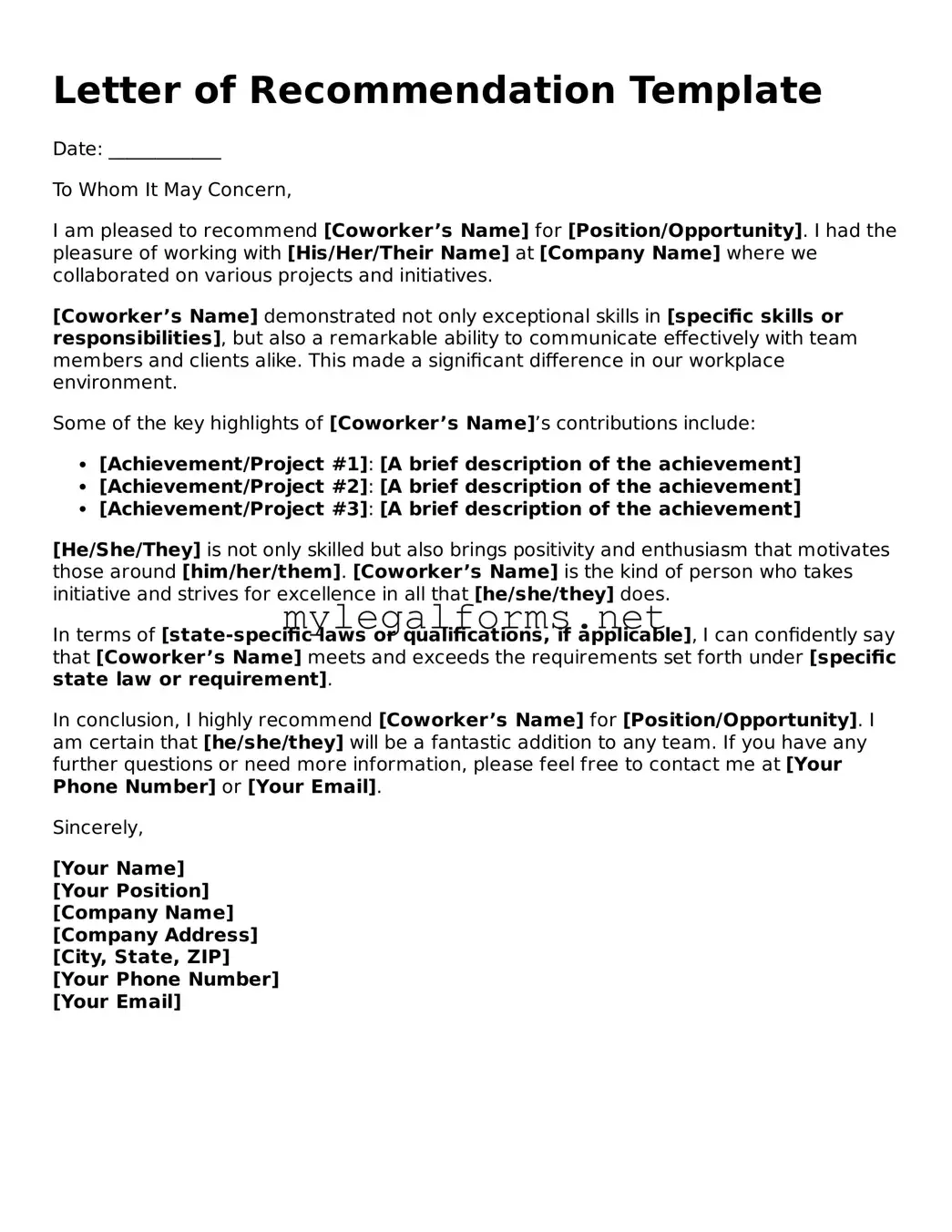Letter of Recommendation Template
Date: ____________
To Whom It May Concern,
I am pleased to recommend [Coworker’s Name] for [Position/Opportunity]. I had the pleasure of working with [His/Her/Their Name] at [Company Name] where we collaborated on various projects and initiatives.
[Coworker’s Name] demonstrated not only exceptional skills in [specific skills or responsibilities], but also a remarkable ability to communicate effectively with team members and clients alike. This made a significant difference in our workplace environment.
Some of the key highlights of [Coworker’s Name]’s contributions include:
- [Achievement/Project #1]: [A brief description of the achievement]
- [Achievement/Project #2]: [A brief description of the achievement]
- [Achievement/Project #3]: [A brief description of the achievement]
[He/She/They] is not only skilled but also brings positivity and enthusiasm that motivates those around [him/her/them]. [Coworker’s Name] is the kind of person who takes initiative and strives for excellence in all that [he/she/they] does.
In terms of [state-specific laws or qualifications, if applicable], I can confidently say that [Coworker’s Name] meets and exceeds the requirements set forth under [specific state law or requirement].
In conclusion, I highly recommend [Coworker’s Name] for [Position/Opportunity]. I am certain that [he/she/they] will be a fantastic addition to any team. If you have any further questions or need more information, please feel free to contact me at [Your Phone Number] or [Your Email].
Sincerely,
[Your Name]
[Your Position]
[Company Name]
[Company Address]
[City, State, ZIP]
[Your Phone Number]
[Your Email]
